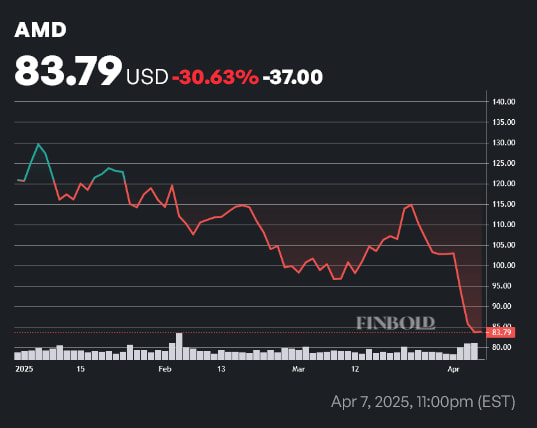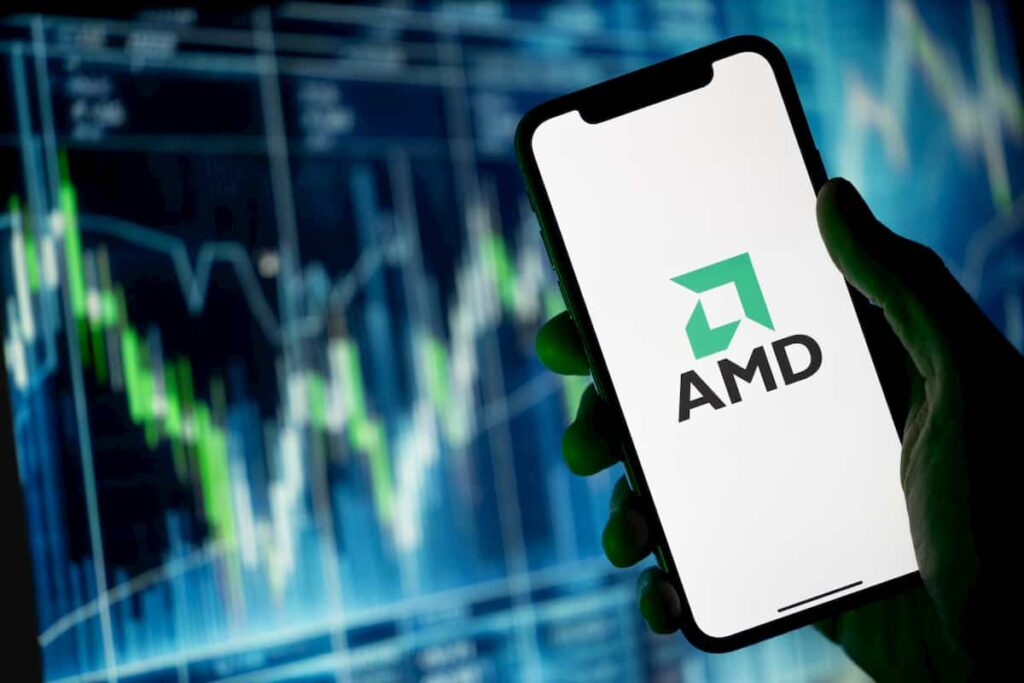Advanced Micro Devices (NASDAQ: AMD) has been struggling ever since July of 2024. The recent tariff-driven crash has done AMD stock no favors.
On Friday, April 4, AMD shares closed at $84.80. Then, on Black Monday 2025, they opened 6.26% lower, at $79.49, before ultimately rebounding to $83.64.
By press time on April 8, AMD stock was trading at $83.79, bringing year-to-date (YTD) losses up to 30.63%.

While analysts are turning more conservative regarding the S&P 500’s prospects in 2025, short-term price action has been rather uneven across the index. Unlike AMD, several major stocks rallied on Monday. Now, a major Wall Street firm has revised its outlook on the struggling semiconductor company.
KeyBanc turns neutral on AMD stock
Up to this point, KeyBanc had been issuing an ‘Overweight’ rating for Advanced Micro Devices shares, equivalent to a ‘Strong Buy’. However, on Tuesday, a team of analysts led by John Vinh downgraded the stock to ‘Sector Weight’.
While not directly equivalent to a ‘Hold’ rating, such coverage forecasts that the equity in question will perform in-line with industry-wide trends — neither outperforming nor underperforming peers, competitors, and rivals.
In a note shared with investors, Vinh cited worries regarding the sustainability of the company’s China business in the artificial intelligence (AI) sector, as well as a potential price war with Intel, as the key drivers behind his decision.
Here’s the interesting part. Before Tuesday, KeyBanc had a $140 price target on AMD stock. That figure implied a 67.08% upside. The operative word here is implied, as Vinh’s revised coverage does not include a price target at all.
So, what can we deduce from this? Despite the neutral outlook, this still qualifies as a bearish turn — whereas KeyBanc was forecasting significant upside, now the firm is reticent regarding its price forecast, which suggests a significant degree of uncertainty.
At a forward price-to-earnings (PE) of just 16.26, AMD stock might be an enticing value play — but at this rate, it will be years before investors can profit off of the ailing chipmaker’s shares.
Featured image via Shutterstock









